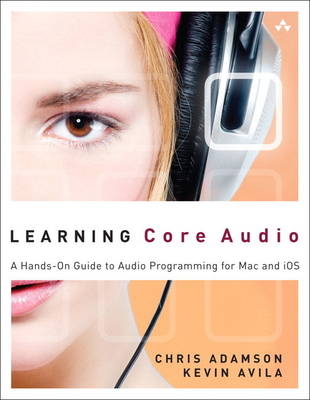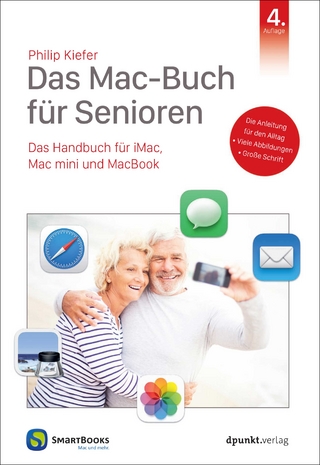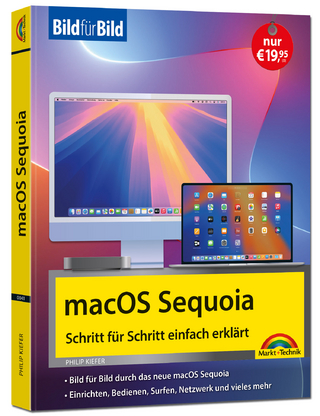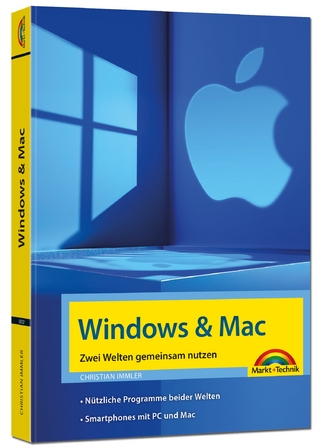
Learning Core Audio
Addison-Wesley Educational Publishers Inc (Verlag)
978-0-321-63684-3 (ISBN)
- Titel ist leider vergriffen;
keine Neuauflage - Artikel merken
Chris Adamson is an independent writer, editor, and developer who lives in Grand Rapids, Michigan. Now focusing on iOS and Mac development, he is the coauthor of iOS SDK Development. He is also the author of QuickTime for Java: A Developer's Notebook and coauthor of Swing Hacks. He was formerly the editor of java.net and ONJava.com. He consults and publishes through his corporate identity, Subsequently and Furthermore, Inc., with a focus on user-facing and digital media development for Mac and iOS. He blogs on digital media software development at www.subfurther.com/blog. In a previous career, he was a writer/associate producer at CNN Headline News, and over the years, he has managed to own 11 1/2 Macs. Kevin Avila (a.k.a. dogbert) is a smooth blend of carbon compounds, oxygen, hydrogen, and nitrogen, with some impurities for added flavor. Additionally, he has more than 15 years' experience developing for the Mac and, since its release, the iPhone. Kevin has been involved in every corner of the audio market, from being an engineer at Apple to configuring professional recording studios. He currently is a code mercenary for various clients while he sits in his underwear at home, sipping coffee.
About the Authors xiii Foreword by Mike Lee xv
Introduction 1
Audience for This Book 2
What You Need to Know 3
Looking Up Documentation 3
How This Book Is Organized 5
About the Sample Code 9
PART I: UNDERSTANDING CORE AUDIO
Chapter 1 Overview of Core Audio 13
The Core Audio Frameworks 14
Core Audio Conventions 15
Your First Core Audio Application 16
Running the Example 19
Core Audio Properties 22
Summary 23
Chapter 2 The Story of Sound 25
Making Waves 25
Digital Audio 27
DIY Samples 32
Buffers 40
Audio Formats 40
Summary 41
Chapter 3 Audio Processing with Core Audio 43
Audio Data Formats 43
Example: Figuring Out Formats 46
Canonical Formats 51
Processing Audio with Audio Units 53
The Pull Model 55
Summary 55
PART II: BASIC AUDIO
Chapter 4 Recording 59
All About Audio Queues 59
Building a Recorder 60
A CheckError() Function 63
Creating and Using the Audio Queue 64
Utility Functions for the Audio Queue 71
The Recording Audio Queue Callback 75
Summary 78
Chapter 5 Playback 81
Defining the Playback Application 81
Setting Up a File-Playing Audio Queue 83
Setting Up the Playback Buffers 85
Starting the Playback Queue 88
Playback Utility Functions 89
Handling the Magic Cookie 89
Calculating Buffer Size and Expected Packet Count 90
The Playback Audio Queue Callback 91
Features and Limits of Queue-Based Playback 94
Summary 95
Chapter 6 Conversion 97
The afconvert Utility 97
Using Audio Converter Services 100
Setting Up Files for Conversion 102
Calling Audio Converter Services 105
Implementing the Converter Callback 109
Converting with Extended Audio File Services 112
Reading and Converting with Extended Audio Files 116
Summary 118
PART III: ADVANCED AUDIO
Chapter 7 Audio Units: Generators, Effects, and Rendering 123
Where the Magic Happens 123
How Audio Units Work 124
Sizing Up the Audio Units 126
Your First Audio Units 129
Building the main() Function 131
Creating an Audio Unit Graph 133
Setting Up the File Player Audio Unit 137
Speech and Effects with Audio Units 141
Building Blocks of the Speech Synthesis Graph 142
Creating a Speech Synthesis AUGraph 144
Setting Up a Speech Synthesizer 146
Adding Effects 147
Adding Your Code to the Audio Rendering Process 150
The Audio Unit Render Cycle 150
A Custom Rendering Example 151
Creating and Connecting Audio Units 154
The Render Callback Function 155
Summary 160
Chapter 8 Audio Units: Input and Mixing 161
Working with I/O Input 161
Connecting Input and Output Units 164
Creating an AUHAL Unit for Input 168
Writing the Input Callback 176
Building an AUGraph to Play Samples from a CARingBuffer 178
Writing the Play-Through App’s Render Callback 181
Running the Play-Through Example 182
Mixing 183
Summary 189
Chapter 9 Positional Sound 191
Sound in Space 191
The OpenAL API 193
Putting a Sound in Space 196
Setting Up the Example 197
Using OpenAL Objects 200
Animating the Source’s Position 205
Loading Samples for an OpenAL Buffer 206
Streaming Audio in OpenAL 210
Setting Up the OpenAL Streaming Example 210
Setting Up an ExtAudioFile for Streaming 215
Refilling the OpenAL Buffers 217
Summary 220
PART IV: ADDITIONAL TOPICS
Chapter 10 Core Audio on iOS 223
Is That Core Audio in Your Pocket? 223
Playing Nicely with Others: Audio Session Services 224
An Audio Session Example 227
Setting Up the App 227
Initializing the Audio Session and Audio Queue 231
The Tone Generator Method 234
Handling iOS Interruptions 236
Audio Units on iOS 238
Building an Audio Pass-Through App with the iOS RemoteIO Unit 239
Setting Up the Pass-Through Example 241
Setting Up the RemoteIO Audio Unit for Capture and Play-Out 244
The RemoteIO Render Callback 249
Other iOS Audio Tricks 253
Remote Control on iOS 253
IOS Hardware Hazards 254
Summary 254
Chapter 11 Core MIDI 257
MIDI Concepts 257
Core MIDI 258
Core MIDI Architecture 258
Core MIDI Terminology 258
Core MIDI Properties 260
MIDI Messages 260
Instrument Units 261
Building a Simple MIDI Synthesizer 262
Connecting to MIDI 265
Handling MIDI Notifications and Events 267
Playing Your AUGraph 269
Creating MIDI Events 269
Setting Up the MIDIWifiSource Example 269
Setting Up MIDI over Wi-Fi 271
Sending MIDI Messages 273
Setting Up Your Mac to Receive Wi-Fi MIDI Data 275
Summary: MIDI Mastery … but Mobility? 277
Chapter 12 Coda 279
Still More Core Audio 279
Next Steps 280
Digital Signal Processing 280
Lion and iOS 5 281
AUSampler 281
Core Audio on iOS 5 285
The Core Audio Community 286
Summary: Sounds Good 287
Index 289
| Erscheint lt. Verlag | 10.5.2012 |
|---|---|
| Reihe/Serie | Learning |
| Verlagsort | New Jersey |
| Sprache | englisch |
| Maße | 176 x 226 mm |
| Gewicht | 500 g |
| Themenwelt | Informatik ► Betriebssysteme / Server ► Macintosh / Mac OS X |
| Mathematik / Informatik ► Informatik ► Programmiersprachen / -werkzeuge | |
| ISBN-10 | 0-321-63684-8 / 0321636848 |
| ISBN-13 | 978-0-321-63684-3 / 9780321636843 |
| Zustand | Neuware |
| Informationen gemäß Produktsicherheitsverordnung (GPSR) | |
| Haben Sie eine Frage zum Produkt? |
aus dem Bereich


